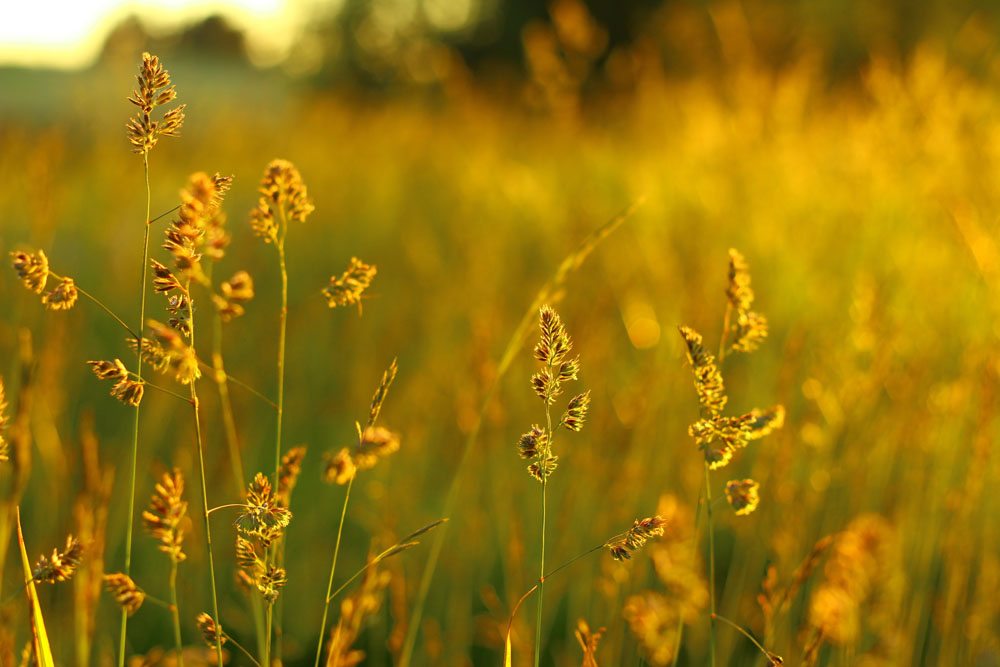
September is an especially important time of the year for those who suffer from hay fever. You can more fully enjoy the crisp, clear days of the new season by taking some simple steps now to address the Pitta imbalances and impurities that may have accumulated throughout the summer.
It is important to appreciate the huge changes that occur during the transition from summer to fall — changes both in climactic and doshic influences. As the fall season begins, the predominance of Pitta dosha, which has been steadily accumulating over the summer months, gives way to a rise in Vata dosha. This added influence of Vata can actually result in an upsurge of Pitta disorders; particularly skin disorders, allergies, eye problems and digestive disturbances. This happens because Vata, which is moving and changeable by nature, mobilizes the underlying accumulated Pitta imbalances, which then rise to the surface.
Hay fever is particularly common during the transition of summer to fall. It is basically an imbalance in the immune system (a condition called immune hyperactivity). The immune system mistakes something that is normally benign (such as pollen or dust) as something harmful and releases a variety of chemical mediators, which leads to the unpleasant symptoms of hay fever. According to Ayurveda, it is ama (or toxins) and low immunity that triggers these reactions, as the body tries to purify itself of impurities related to digestive (Pitta) imbalances.
Remember, during the summer months our bodies reacted to the high external temperatures by lowering our internal digestive fire. If we did not adjust our eating habits to accommodate our diminished capacity for digestion, there is a good chance that we accumulated ama (impurities) during June, July and August.
For this reason, fall is an ideal time to think in terms of purifying the physiology. It is one of the best times to participate in the classical purification treatments of Ayurveda, known as Panchakarma. These therapies are designed to strengthen the physiology, remove accumulated impurities and balance the doshas. This allows one to go forward into the fall and winter season with a balanced physiology. If you do not have time for a full Panchakarma program, check with an Ayurveda expert to see if Nasya treatments would be helpful. Nasya is a treatment used to purify the head and neck region.
TRANSITIONAL SUMMER TO FALL TIPS
Maintain a Pitta-pacifying diet while it is still hot outside, but also begin to add Vata pacifying behaviors. For instance, while it is good to be drinking plenty of room temperature water, also start sipping some hot water throughout the day.
This is an especially important time to avoid foods that are difficult to digest, such as cheese, non-vegetarian foods, processed foods and cold drinks and ice cream. Raw foods can also dampen your digestive fire.
To pacify the rising influence of Vata, be attentive to the regularity of your daily routine. Go to bed on time, wake with the rising sun, give yourself a daily oil massage, eat at regular times, and be regular with your mediation practice.
